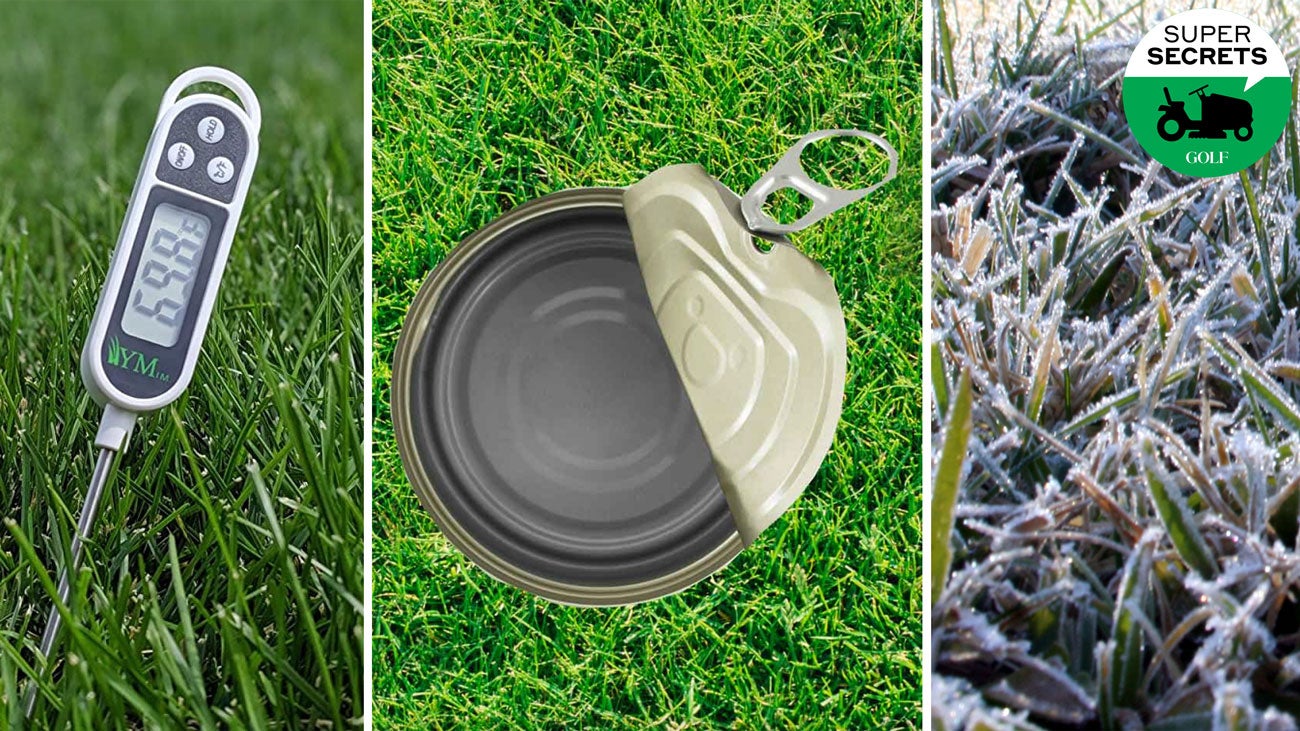As the year draws to a close, lawns and courses across much of the country have gone dormant. But turf-care education never sleeps. In the spirit of non-stop learning, we scoured the past 12 months of interviews with superintendents in search of the most clever and surprising insights. Here are our four favorite turf-care tips from our Super Secrets series in 2021.
1. A meat thermometer for taking soil temps
Many maintenance practices are predicated on soil temperatures, which can influence everything from how and when you mow to when you fertilize and water. To measure the mercury in your yard, you can pick up a soil thermometer at your local lawn-care store. Or, you could simply use a Thanksgiving leftover. The same thermometer you plunged into your turkey will work just fine if you stick it in your yard.
Tip originally appeared in: 6 lawn-care musts for springtime prep (March 19, 2021)
2. The tuna-can water test
When it comes to watering your lawn, you want to take a page from Goldilocks and get the quantities just right. But how do you know if you’re over or under-doing it? Superintendents have sophisticated tools to answer this question. But here’s a hack you can use at home. Place an empty tuna can in your yard as you irrigate and measure the water level in the can when you’re finished. On average, you should aim to give your grass about an inch of water every seven days. Simple math will tell you whether you’re giving your grass too much or too little to drink.
Tip originally appeared in: 5 clever lawn-care tricks that you’ll wish you had learned years ago (Sept. 3, 2021)
3. Canola oil as pest control
The world is awash is chemical products that kill or repel all kinds of pests. But if you want to do right by the environment, consider what’s in your kitchen cabinet instead. A number of natural oils, including sesame oil and canola oil, can help keep bugs at bay, whether through suffocation or desiccation, or by dissolving their larvae. And unlike chemical pesticides, you can cook with them, too.
Tip originally appeared in: 5 clever pest-control tactics that are guaranteed yard-improvers (Sept. 17, 2021)
4. Using frost to foster growth
Frost often kills or damages turf. But you can put it to use to promote new growth. The way to do it is through a process known to farmers as “frost seeding.” As the first serious cold snap of the season is approaching, lay down seed, ideally using a slit-seeder to make thin slits in the soil where the seeds can settle. Then let the frost cycle do its work. As the ground freezes and thaws, it will expand and contract, drawing the seeds deeper into the soil, where they’ll start to germinate before the brunt of winter. Come spring, those hibernating seedlings will reawaken, with a healthy head start on the year.
Tip originally appeared in: Why seeding your yard before winter will pay off huge come spring (Nov. 12, 2021)
